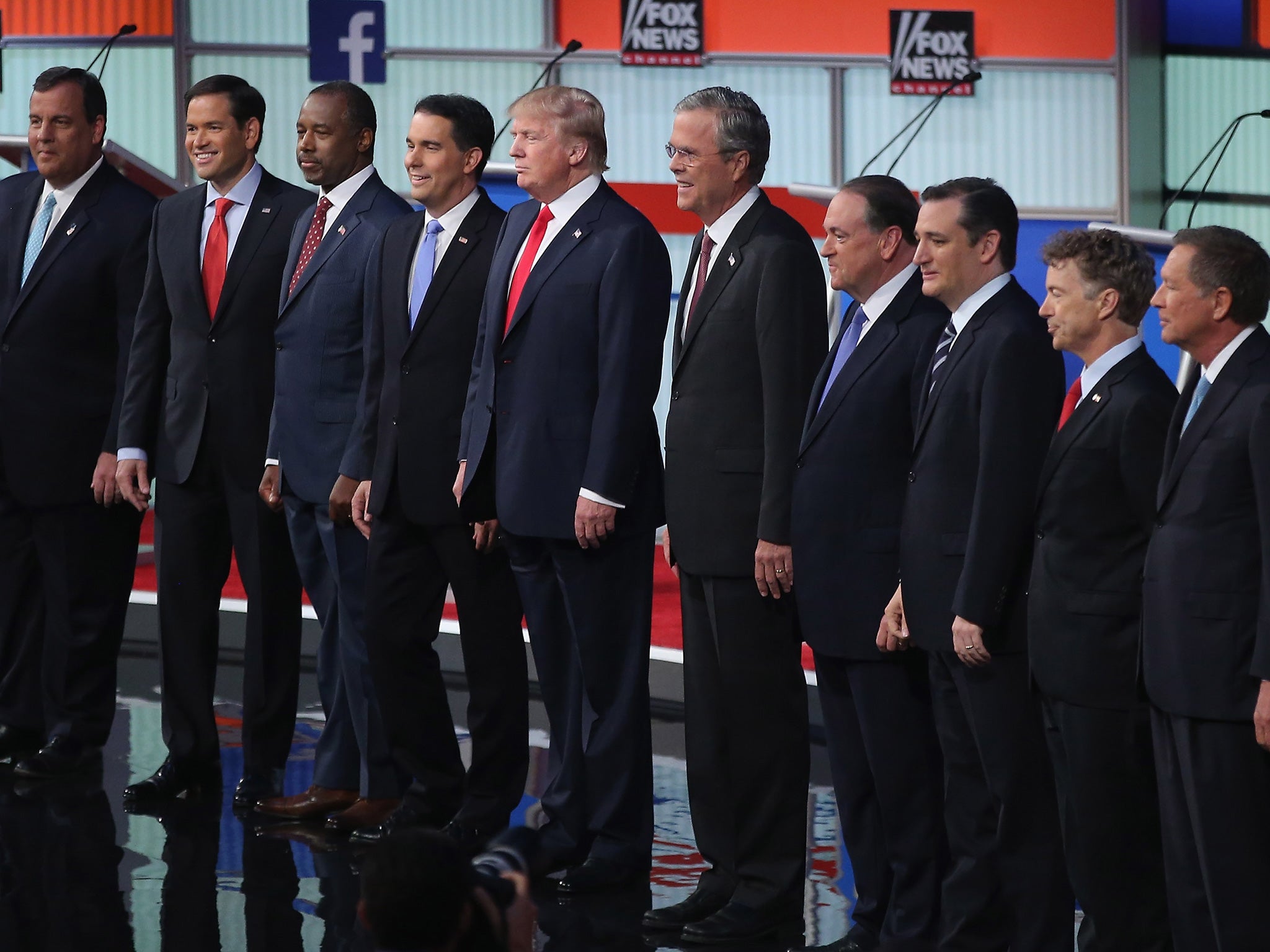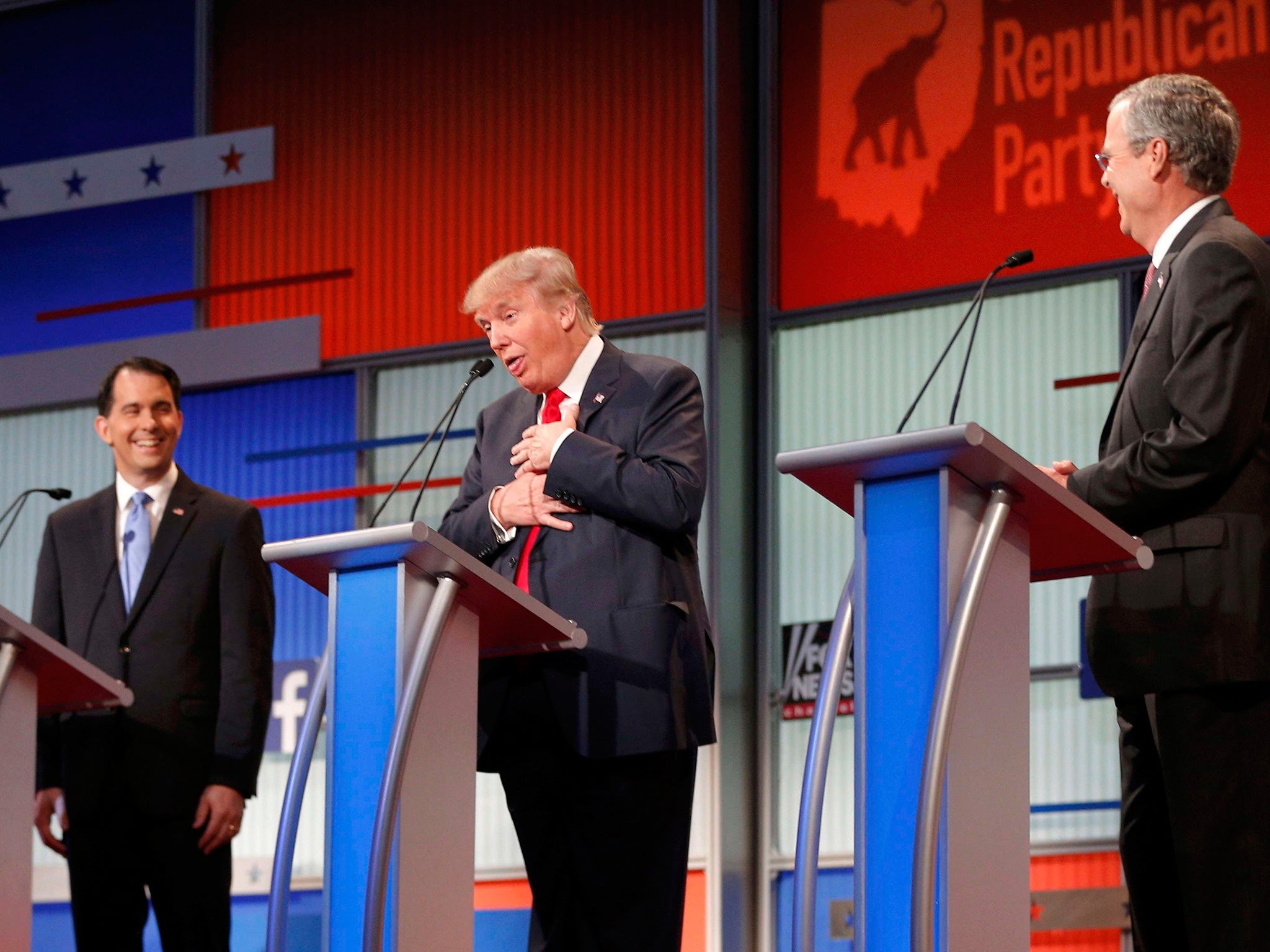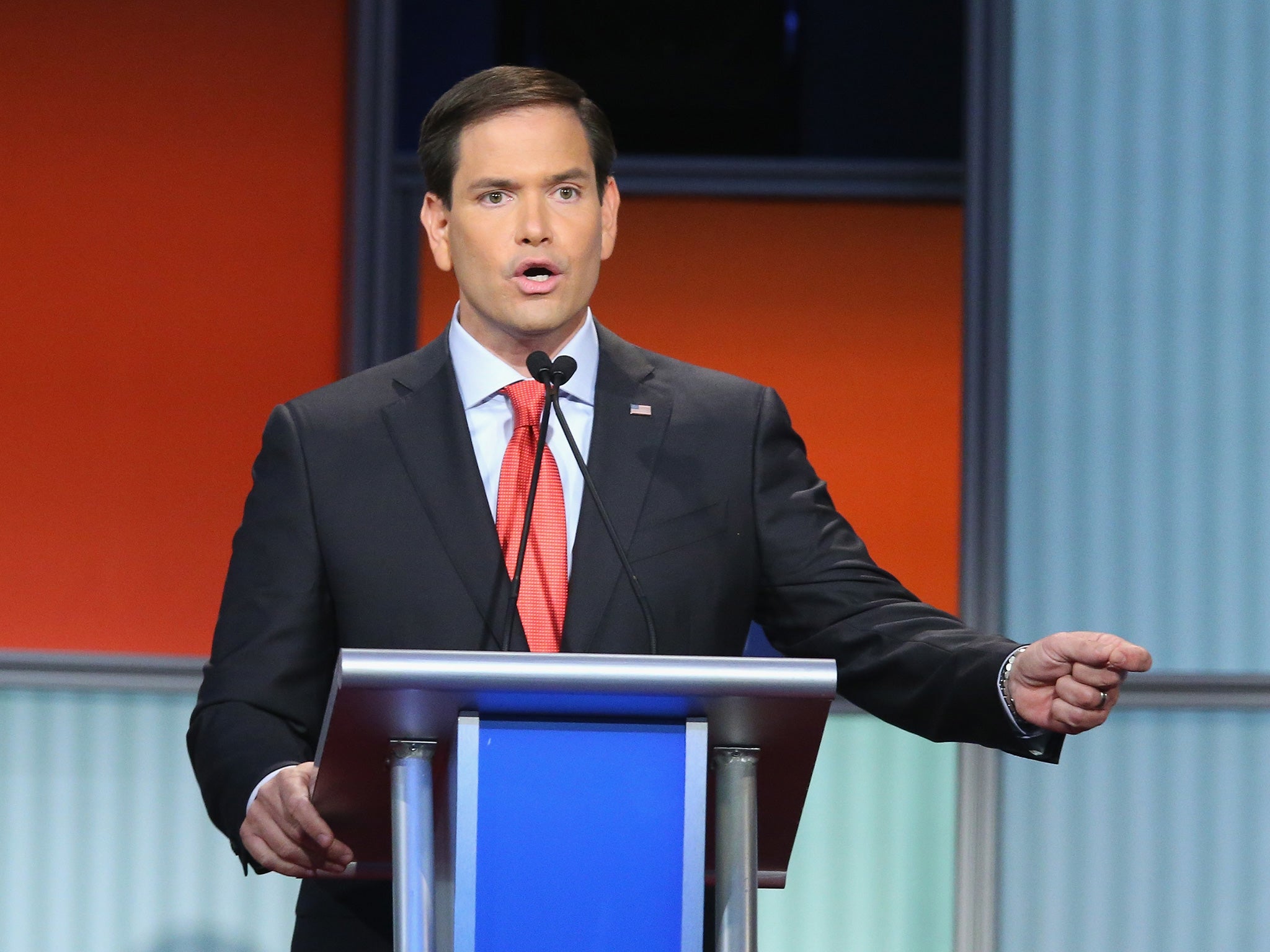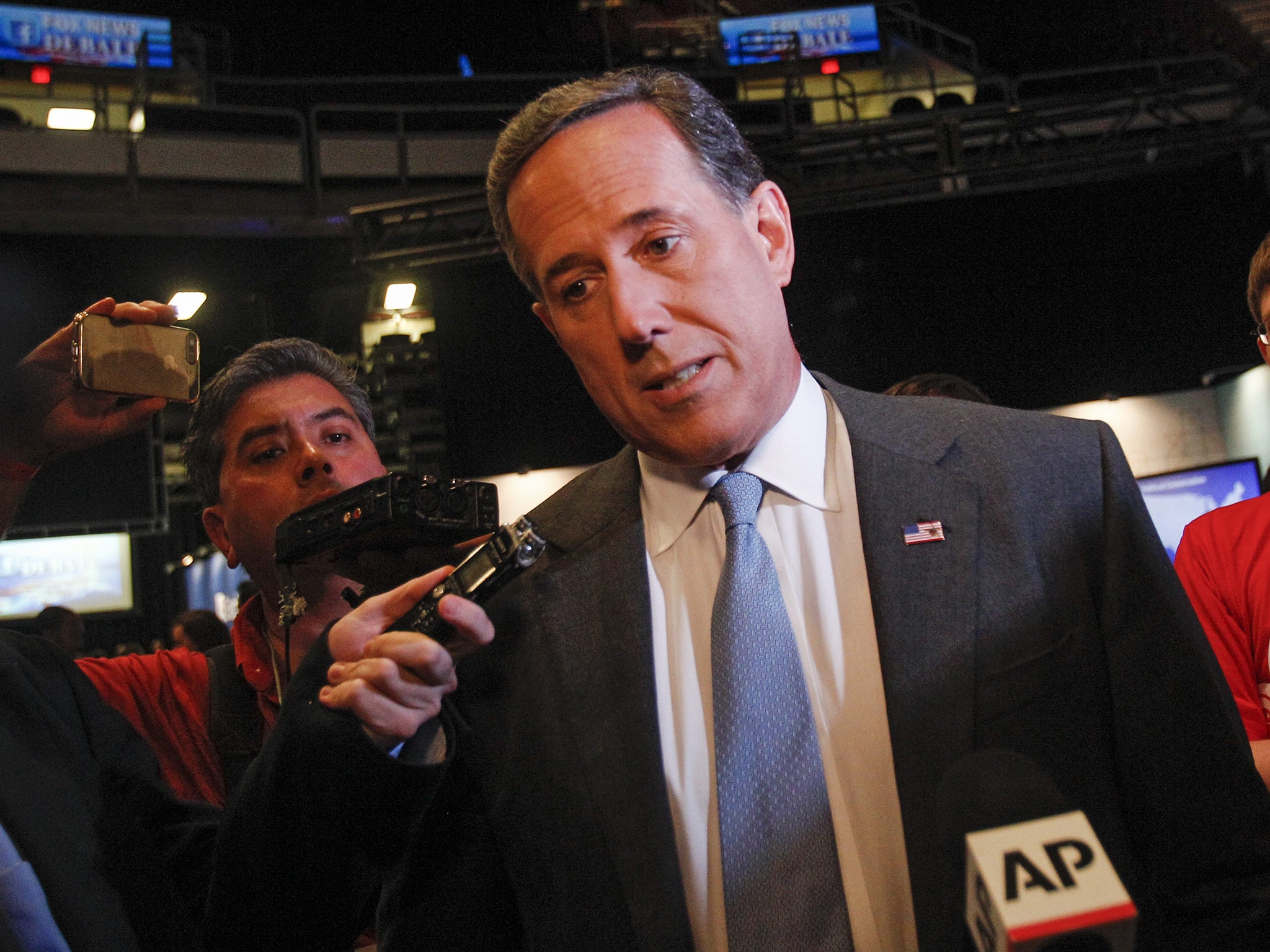Republican 2016 debate: Fact-checking the candidates' claims
Not every candidate uttered facts that are easily fact checked — it's up to astute readers to make up their own minds over who is telling the truth

Welcome to our first edition of fact checks of the debates for the 2016 presidential election cycle. Fox News aired two debates on Thursday: a prime-time event starring ten candidates and an earlier debate first featuring seven second-tier candidates, based on an average of recent polls.
Not every candidate uttered facts that are easily fact checked, but following is a list of 20 suspicious claims. As is our practice, we do not award Pinocchios when we do a roundup of facts in debates. But astute readers should be able to figure out the whoppers. These claims are examined in the order in which they were uttered.
The Main Event
“I cut taxes every year, totaling $19 billion…During my eight years, 1.3 million jobs were created.”
–Former Gov. Jeb Bush (R-Fla.)
A report by Martin Sullivan in TaxAnalysis excluded federal actions and adjusted for inflation and concluded that the actual figure during Bush’s eight years was about $13 billion—about two-thirds of the figure touted by Bush.
On a per resident basis, that amounts to only $140, Sullivan concluded.
As for the 1.3 million jobs during Bush’s tenure, between 1999 and 2007, that is correct–and we note with approval that he does not claim he was largely responsible for that record. (In fact, a real-estate bubble was mostly responsible.) But he was lucky to step down just before the Great Recession swamped the economy–and nearly 1 million jobs were lost in the next three years.
“A hundred ninety-two thousand private sector jobs in the five and a half years I’ve been governor.”
–New Jersey Gov. Chris Christie
Governors often try to claim credit for jobs created on their watch, even though national economic trends are an important factor. The figure claimed by Christie — 192,000 — is in the ballpark, according to the Bureau of Labor Statistics. BLS data shows a gain of about 181,000 from January 2010 to June of this year.
But that number lacks significant context. According to data assembled by FactCheck.org, the state’s job growth in this period placed it 44th out of 50 states. In fact, Fox moderator Bret Baier noted that fact to Christie just before he made this statement.
“I’ve been fighting amidst a lot of opposition from both Hillary Clinton, as well as some Republicans who wanted to send arms to the allies of ISIS. ISIS rides around in a billion dollars’ worth of Humvees. It’s a disgrace. We shouldn’t fund our enemies, for goodness sakes.”
–Sen. Rand Paul (R-Ky.)
The way Paul phrased this, viewers might have thought he was suggesting that the United States had supplying allies of the Islamic State of Iraq and Syria with Humvees. But that’s not quite right.
Iraqi Prime Minister Haider al-Abadi in June said that in the collapse of Mosul, ISIS captured 2,300 Humvees. The International Business Times said that the vehicles would be worth about $1 billion if sold new, though the age of vehicles is unclear.
“We are rehabbing the drug-addicted. Eighty percent of people in our prisons have addictions or problems.”
–Ohio Gov. John Kasich (R)
The center’s research shows 65 percent (1.5 million out of 2.3 million) of inmates in prisons and jails meet the medical criteria for substance abuse or addiction.
Another 458,000 did not fit the medical definition but had other problems that relate to substance abuse: a history of substance abuse, were under influence of alcohol or drugs when they were committing their crime, committed the offense to buy drugs or were incarcerated with a crime related to violating alcohol or drug laws.
Combining both figures adds to 85 percent of the U.S. prison population — essentially what Kasich said. (–Michelle Ye Hee Lee)
“Our Medicaid is growing at one of the lowest rates in the country.”
–Kasich
Defending his decision to accept Medicaid expansion under the Affordable Care Act, Kasich asserted Medicaid growth was “among the lowest rates” in the country. The Kaiser Family Foundation says Ohio’s growth rate is 3.3 percent between 2010 and 2013, placing it slightly below the national average of four percent. Overall, Ohio ranks 26th out of 50 states.
“Before I came in, the unemployment rate was over eight percent. It’s now down to 4.6 percent. … The rate in which people are working is almost five points higher than it is nationally.”
–Gov. Scott Walker (R-Wisc.)
Walker pivoted from a question about his failure to meet his 250,000-job goal to say he, instead, brought down unemployment rates and raised labor participation rates. The numbers check out, using Bureau of Labor Statistics data. But when placed in context, the numbers Walker touts are less impressive.
Wisconsin traditionally has had a higher labor participation rate than the national average. And unemployment rate in Wisconsin decreased during a time when both national and regional unemployment rates steadily decreased as well. (–Michelle Ye Hee Lee)
“Most of the people on this stage I’ve given to, just so you understand, a lot of money.”
–Real estate mogul Donald Trump

Trump has given to a lot of Democratic and Republican candidates. But he didn’t donate to “most” of the people he debated against on stage. Out of his nine debate competitors, he donated to two. He donated to two other GOP hopefuls who debated in the earlier event. Indeed, when he made his claim, a number of the other candidates chimed in that he had not donated to them.
PolitiFact has compiled databases of Trump’s state and federal political contributions from 1989 to present, using data from OpenSecrets.org and FollowtheMoney.org. The databases show Trump donated $10,000 to Wisconsin Gov. Scott Walker and his Lieutenant Gov. Rebecca Kleefisch; and $500 to former Florida Gov. Jeb Bush and his former Lieutenant Gov. Frank Brogan. Trump also donated $43,500 to former New York Gov. George Pataki (R) and $2,600 to Sen. Lindsey Graham (R-S.C.), neither of whom made the cut-off for the main debate.
“A lot of money” may be subjective, but he certainly did not contribute to “most” of his competitors.
At another point in the debate, Trump pointed to Rand Paul, saying: “I’ve given him plenty of money.” The contribution records do not support that. (–Michelle Ye Hee Lee)
“Medicare … was robbed $700 billion dollars to pay for Obamacare.”
–Former Gov. Mike Huckabee (R-Ark.)
This is a golden oldie from the 2012 presidential campaign–when it was frequently debunked.
The $700 billion figure comes from the difference over 10 years (2013-2022) between anticipated Medicare spending (what is known as “the baseline”) and the changes that the law makes to reduce spending. The savings mostly are wrung from health-care providers, not Medicare beneficiaries — who, as a result of the health-care law, ended up with new benefits for preventive care and prescription drugs. (It is worth noting that, given past practices, the Medicare actuary has doubted whether all of the planned cuts actually will come to pass.)
While it is correct that anticipated savings from Medicare were used to help offset some of the anticipated costs of expanding health care for all Americans, it does not affect the Medicare trust fund. In fact, the Obama health-care law also raised Medicare payroll taxes by $318 billion over the new 10-year time frame, further strengthening the program’s financial condition.
Under the health-care law, spending does not decrease in Medicare year after year; the reduction is from anticipated levels of spending in future years.
Still, a good chunk of the spending reductions — $156 billion — would come at the expense of Medicare Advantage programs, used by nearly 30 percent of Medicare beneficiaries and often favored by Republicans. The goal of the reduction is to put payments on a par with traditional fee-for-service Medicare, as Medicare Advantage now costs the government more. But there have been some documented shifts in the Medicare Advantage market that have impacted seniors.
“The [Social Security] Trust Fund is filled with IOUs”
–Gov. Chris Christie (R-N.J.)
This is a common refrain by politicians about Social Security. But IOU is just a pejorative way of saying “bond.” These bonds are backed by the full faith and credit of the U.S. government. Until the 2011 debt-ceiling impasse, one could not imagine that any president or Congress would risk defaulting on them because it would damage the nation’s financial standing. Still, Treasury bonds are considered a good bet — deemed to be one of the safest places to keep money.
The bonds are a real asset to Social Security, but they also represent an obligation of the rest of the government. Like any entity that issues debt, such as a corporation, the government will have to make good on its obligations, generally by taking the money out of revenue, reducing expenses or issuing new debt. The action taken really depends on the resources available at the time. There is nothing particularly unusual about this, except that the U.S. government is better placed to make good on these obligations than virtually any other debt-issuer.
Some analysts, however, question whether the Social Security system holding those bonds lowers the cost of paying benefits relative to if the system did not hold them. Since the bonds have to be redeemed by general taxpayers, as a group taxpayers have to provide the same level of revenues to finance benefit payments as if Social Security were not holding any bonds.
So then the question becomes whether the fact that Social Security ran these surpluses in the past improved the government’s overall fiscal position and thereby made it easier for the government to finance the total level of upcoming benefit payments. Some analysts contend that the existence of the earlier Social Security surpluses spurred lawmakers to spend more, resulting in higher public debt.
“I have never said that [favoring a rape and incest exemption] and I have never advocated that.”
–Sen. Marco Rubio (R-Fla.)

Rubio has a mixed record on abortion exemptions. He has supported bills that have exceptions for victims of rape and incest, but also supported bills without such provisions.
Rubio in 2013 co-sponsored a Senate 20-week abortion ban bill that allowed exemptions for abortions in cases of rape and incest. Yet in 2011, he sponsored an anti-abortion bill that not include the same protections.
It’s fair for him to say that he had never “advocated” for the exemption. In fact, it’s not entirely clear where he stands on exemptions, or under what conditions he supports them. (–Michelle Ye Hee Lee)
“Barack Obama became president, and he abandoned Iraq. He left, and when he left Al Qaida was done for. ISIS was created because of the void that we left.”
–Bush
Bush repeats a version of a statement that had previously earned him Four Pinocchios, but he softened it to make it more accurate. But he still ignores the fact that the Islamic State of today is simply an outgrowth of al-Qaeda of Iraq.
In 2007, the Times of London, quoting U.S. intelligence officials, described “a radical plan by Al-Qaeda to take over the Sunni heartland of Iraq and turn it into a militant Islamic state once American troops have withdrawn.” Although the term “ISIS” was not used until 2013, after the group captured territory in Syria, the Islamic State of Iraq, declared in 2006, was intended to be the organization it is today, spread across nation-states.
Bush could credibly argue that Obama’s decision to withdraw from Iraq, combined with the president’s reluctance to intervene in Syria, fostered the conditions that allowed Islamic State to expand territory under its control. He began to make that case by arguing that Obama “abandoned Iraq.” But it is still a stretch say that al-Qaeda in Iraq was “done for” when Obama took office—and that ISIS was “created” by that void. ISIS certainly flourished, but the roots already existed when Bush’s brother was president.
“We’re giving them [Iran] $150 billion dollars plus, they are going to be — I’ll tell you what, if Iran was a stock, you folks should go out and buy it right now because you’ll quadruple — this, what’s happening in Iran, is a disgrace, and it’s going to lead to destruction in large portions of the world.”
–Trump
The White House has said much of that money is already committed to other outstanding obligations so Iran would only gain access to $56 billion (though, oddly, Obama, has also mentioned a $150 billion figure). To Trump’s broader point, Foreign Policy magazine has estimated the nuclear deal would be worth $420 billion to Iran over the next 15 years.
“Our Navy is at its smallest size since 1917.”
–Dr. Ben Carson
Another zombie statistic from the 2012 campaign! It makes little sense to compare the firepower of a modern, nuclear-powered aircraft carrier with a battleship circa 1916.
The historical records of the Navy show that in 1916, the Navy had 245 ships. This was also the year that President Woodrow Wilson signed into law the Naval Act of 1916, which put the United States on a crash course to build a world-class Navy.
But take a look at the types of ships on the list. Yes, there are cruisers and destroyers but also:
- Gunboats
- Steel Gunboats
- Torpedo Boats
- Monitors (that’s kind of a small warship)
These types of boats aren’t on the list anymore. Instead, the current list of Navy ships includes behemoths such as aircraft carriers, “SSBN” (nuclear-powered, ballistic-missile carrying submarines) and “SSGN” (cruise-missile submarines).
The current level of ships, 273, is on par with the level reached during the Bush administration, when the number of ships fell to 278 in 2007.
“I would reinstate, put in place back in the missile defense system that we had in Poland and in the Czech Republic.”
–Walker
Toward the end of his presidency, George W. Bush, concerned about a possible threat to Europe and the United States from Iranian missiles, proposed to install 10 interceptor missiles in Poland and a radar system in the Czech Republic. Administration officials at the time stressed repeatedly that the plan had nothing to do with Russia — and everything to do with Iran.
Enter President Obama, who announced in September 2009 that he was scrapping the Bush plan and introducing an alternative, what he called a “European phased adaptive approach.” The four-part plan would initially focus on threats posed by Iranian short- and intermediate-range ballistic missiles in Europe, and then eventually would include a fourth phase that would target as-yet undeveloped Iranian intercontinental missiles.
The plan, a shield based on the Navy’s Aegis system, was designed to begin with Navy ships with SM-3 interceptors in the eastern Mediterranean and then progress to land-based SM-3s in Eastern Europe.
However, then-Defense Secretary Robert M. Gates, who recommended the original plan to Bush, has insisted that the new plan was actually better and more threatening to Russia. He included a lengthy discussion of the issue in his memoir, “Duty.” He said the Bush plan was already running into trouble in both Prague and Warsaw and likely would have been rejected by parliaments in both countries. “The Polish and Czech governments were relieved,” he wrote.
“I sincerely believed the new program was better — more in accord with the political realities in Europe and more effective against the emerging Iranian threat,” Gates added. In fact, Gates says, the Russians quickly concluded that the Obama plan was even worse from their perspective, as it eventually might have capabilities that could be used against Russian intercontinental missiles.
The Undercard Debate
“I have a track record in Washington, D.C. of getting things done. Iran sanctions — the Iran sanctions that brought them to the table, those are sanctions that we put in place when I was in the United States Senate.”
–Former Sen. Rick Santorum (R-Pa.)

Santorum is significantly overstating his role in implementing sanctions against Iran. As we have documented before, In 2004 Santorum introduced a bill to help foster democracy in Iran but it went nowhere; in 2005, he introduced a similar bill that also would have included some sanctions, but it also went nowhere. In 2006, he tried to attach the bill to a defense spending bill – and was defeated, in large part because the Bush administration opposed it, fearing it would undo delicate efforts to begin a diplomatic resolution to the nuclear standoff.
A revised version of legislation, giving the president waiver authority to terminate the sanctions with as little as a three-day notice, eventually was approved. But it’s a stretch to claim that this bill led to crushing sanctions. In effect, the law made relatively minor modifications to the Iran and Libya Sanctions Act of 1996, which was the first law that authorized U.S. penalties against third-country companies involved in Iran’s nuclear activities.
The Congressional Research Service in a 2014 report says that no sanctions have been imposed using the sanctions section of Santorum’s law. In fact, the comprehensive CRS report, over 78 pages, barely mentions the legislation, which was relatively minor footnote in the effort to restrain Iran’s nuclear ambitions. Thus it is misleading for Santorum to claim that his legislation “brought them to the table.”
“I ran for office to make the generational changes in Louisiana. We’ve cut 26 percent of our budget.”
–Louisiana Gov. Bobby Jindal (R)
Jindal repeated one of his favorite campaign claims in his opening statement — that he cut 26 percent of the state budget. But it’s based on some budgetary sleight of hand.
The state budget in fiscal 2009, Jindal’s first budget after taking office in 2008, was $34.3 billion. In 2016, the proposed budget was $25.1 billion. That is a $9.2 billion decrease, or a 26.8 percent decrease. His campaign has pointed to these figures in the past to FactCheck.org.
Jindal may call it a generational change, but the budget decrease was not due to his executive decisions alone.
Between those years, federal funding also decreased by $10 billion — from $19.7 billion to $9.7 billion. Part of this decrease was waning federal funding for hurricane recovery, the Times-Picayune has reported. (–Michelle Ye Hee Lee)
“The first thing I would do is tear up that agreement with Iran.”
–Gov. Rick Perry (R-Texas)

Perry makes it sound as if the six-power agreement with Iran can simply be nullified by American fiat. But it’s not that simple. The agreement was joined by Russia, China, France, the United Kingdom and Germany and conducted with the assistance of the European Union. The sanctions in question were imposed by the U.N. Security Council, which has already endorsed the agreement.
So while a new U.S. president in 2017 could announce that he or she would no longer support the international agreement, the president would also need to convince international partners that the agreement is no longer valid, even though Iran may not have violated terms of the deal that would require the “snap back” of sanctions.
As we have noted before, the deal with North Korea negotiated by Bill Clinton was greeted with skepticism by George W. Bush–but the deal only collapsed several years into Bush’s term, after the administration announced it had found evidence of North Korean cheating.
“Health savings accounts was something that we introduced, it’s a private sector solution that believes in freedom — not Obamacare, that believes in government control.”
“You’re looking at the man who introduced and fought on the floor as a freshman senator and passed the Welfare Reform Act of 1996 over two President Clinton vetoes. Got 70 votes in the United States Senate. Bipartisan issue. And I ended a federal entitlement. Never been done before, never been done since.”
–Santorum
They say success has a thousand fathers, and Santorum claimed paternity to a 1992 legislation that led to the modern health savings accounts and the 1996 legislation that overhauled the welfare system. It’s important to note Santorum shifted rhetoric on these two go-to claims tonight; one for the better, one for the worse.
Previously, Santorum had claimed he “invented” health savings accounts. But that was an exaggeration; it took more than a decade of research by a wide coalition of experts before the concept took off on Capitol Hill. He did, however, introduce the first legislation in 1992 and played a key role in pushing it through Congress. During the debate, he accurately described his role on this front.
But he took a step backward on the welfare point. During his last run for the GOP nomination, The Fact Checker awarded him the rare Geppetto Checkmark for the way he characterized his role in changing the nation’s welfare system. While some people criticized him for taking too much credit, we found Santorum didn’t claim to have single-handedly overhauled the welfare system. Most of the time he described his role, he was careful — and correct — to say he played a major role in the effort. That all changed tonight: “And I ended a federal entitlement. Never been done before, never been done since.”(–Michelle Ye Hee Lee)
“1.5 million jobs created during the worst economic time this country has had since the Great Depression while the rest of the country lost 400,000 jobs.”
–Perry
The former Texas governor likes to brag about his record, but he mixes up some figures here. We’ve previously checked a claim in which he said without Texas, the United States would have lost 400,000 jobs between 2007 and 2014. But it was a cherry-picked figure using government data generally used to measure the unemployment rate, not job growth.
In this instance, he altered his statement to flat out saying the United States lost 400,000 jobs in the same time period Texas gained 1.5 million jobs. That’s still not right. Using the preferred Bureau of Labor Statistics measure, there were 1.2 million net new jobs in Texas in this time period – and 2.2 million net new jobs in the United States.
In a period of rising oil prices, the Texas job picture was certainly brighter than much of the rest of the country. But he’s wrong to say the United States overall lost jobs while Texas gained them.
“You’re talking about a state that moved graduation rates forward, from 27th in the nation to second highest.”
— Perry
This statement is a version of a similar talking point that Perry has made in the past — Texas graduation rates soaring 25 places in national rankings from 2002 to 2013. But it’s an apples and orange comparison.
In 2002, the number of graduates was measured by dividing the number of high school students who graduated in a given school year, by the average of three different enrollment measures (Grade 8 enrollment in year 1, Grade 9 enrollment in year 2, Grade 10 enrollment in year 3). Using that measure, Texas ranked 28th nationally in 2002. Using the same measure, in 2012, the state ranked 22nd nationally, as PolitiFact Texas noted in July.
The difference here is that the graduation rate calculation used for the 2013 number, which ranks Texas at second highest in the nation, is different. The 2013 measurement, as defined by the National Center for Education Statistics, is a “four-year regulatory adjusted cohort graduation rate.” It uses the number of students who graduate in four years, divided by the number of first-time 9th graders plus the net number of students who transferred in or out during the four years.
Bottom line: Texas shot up in rankings because the two rankings are measured with different standards. (–Michelle Ye Hee Lee)
©Washington Post
Join our commenting forum
Join thought-provoking conversations, follow other Independent readers and see their replies
0Comments